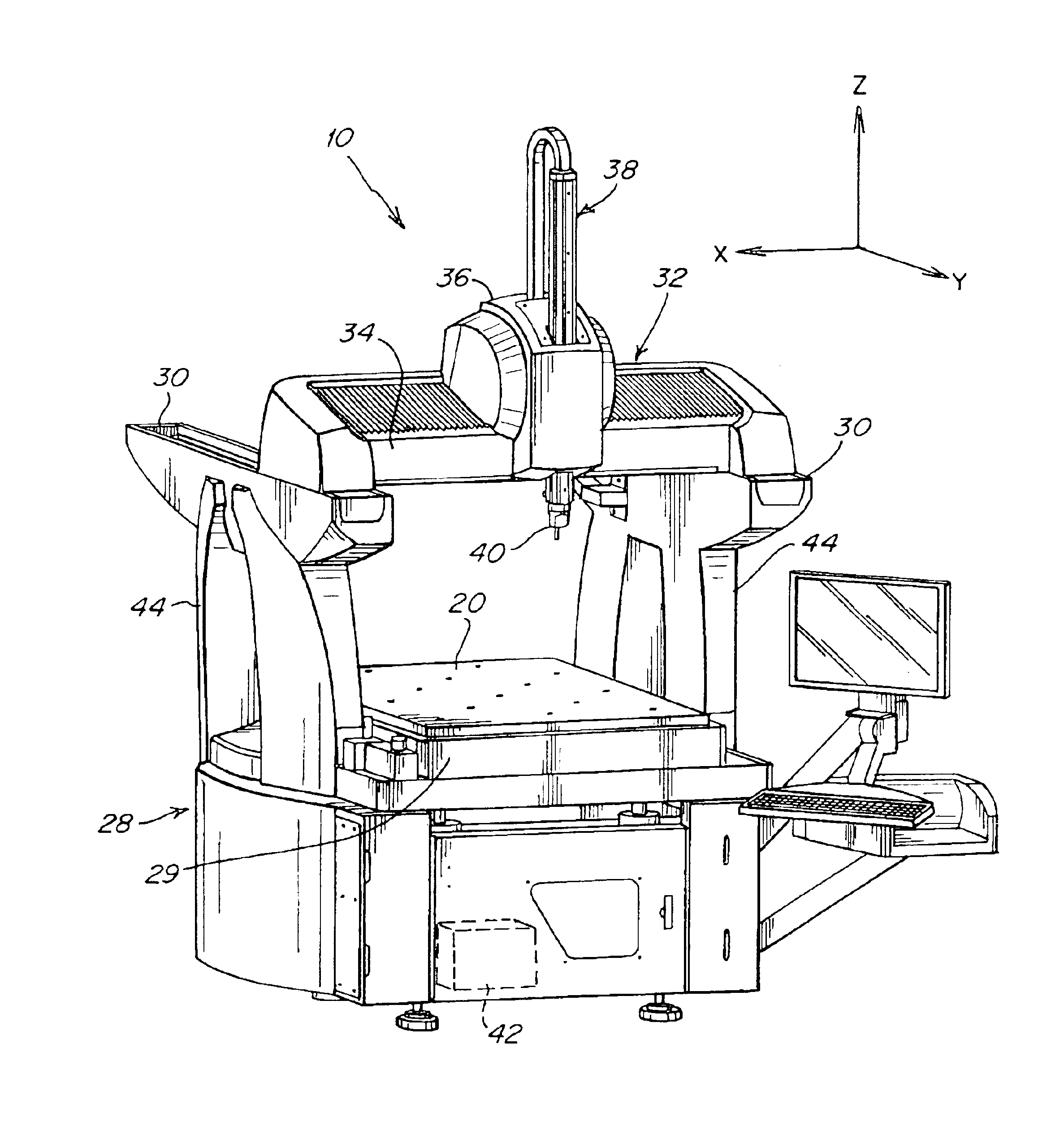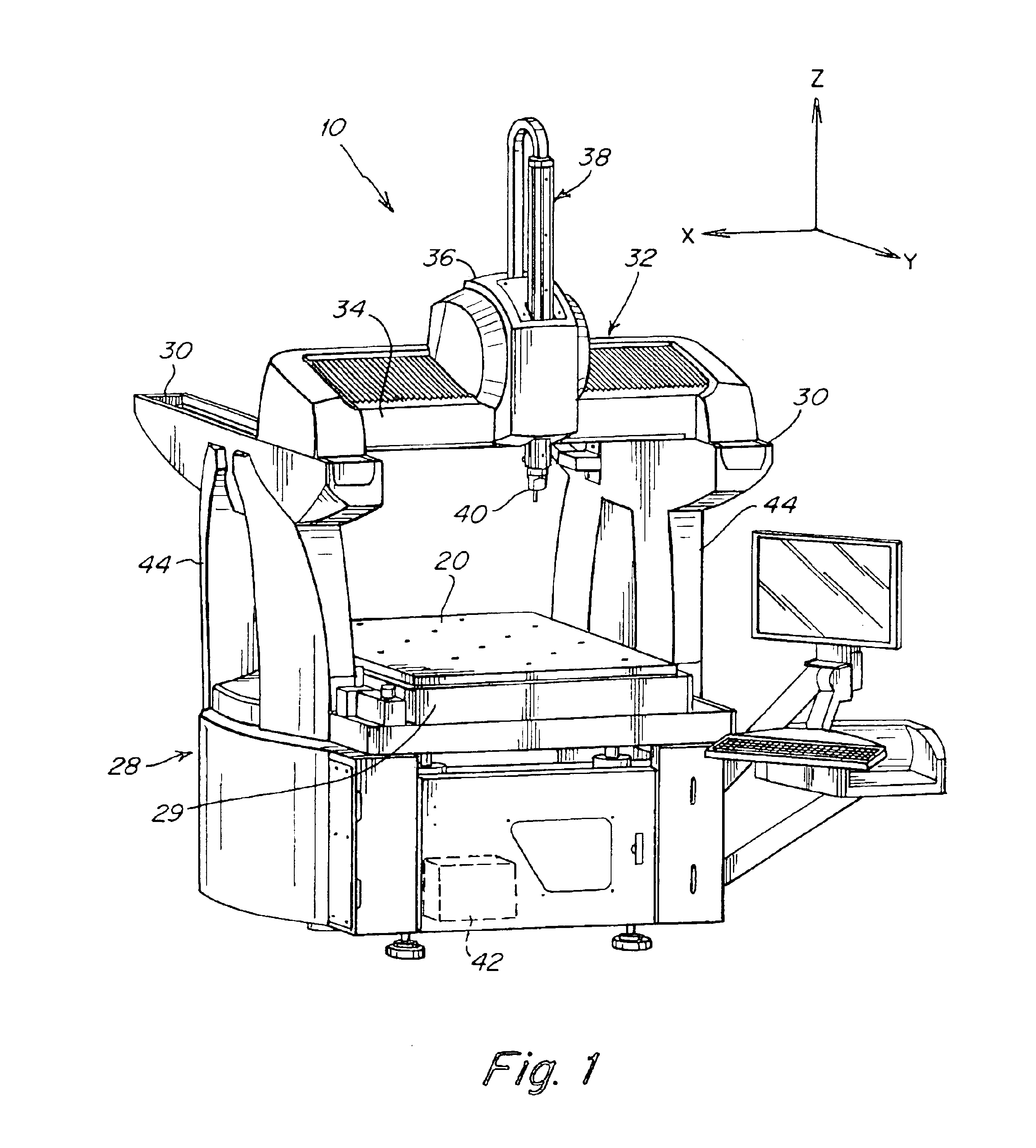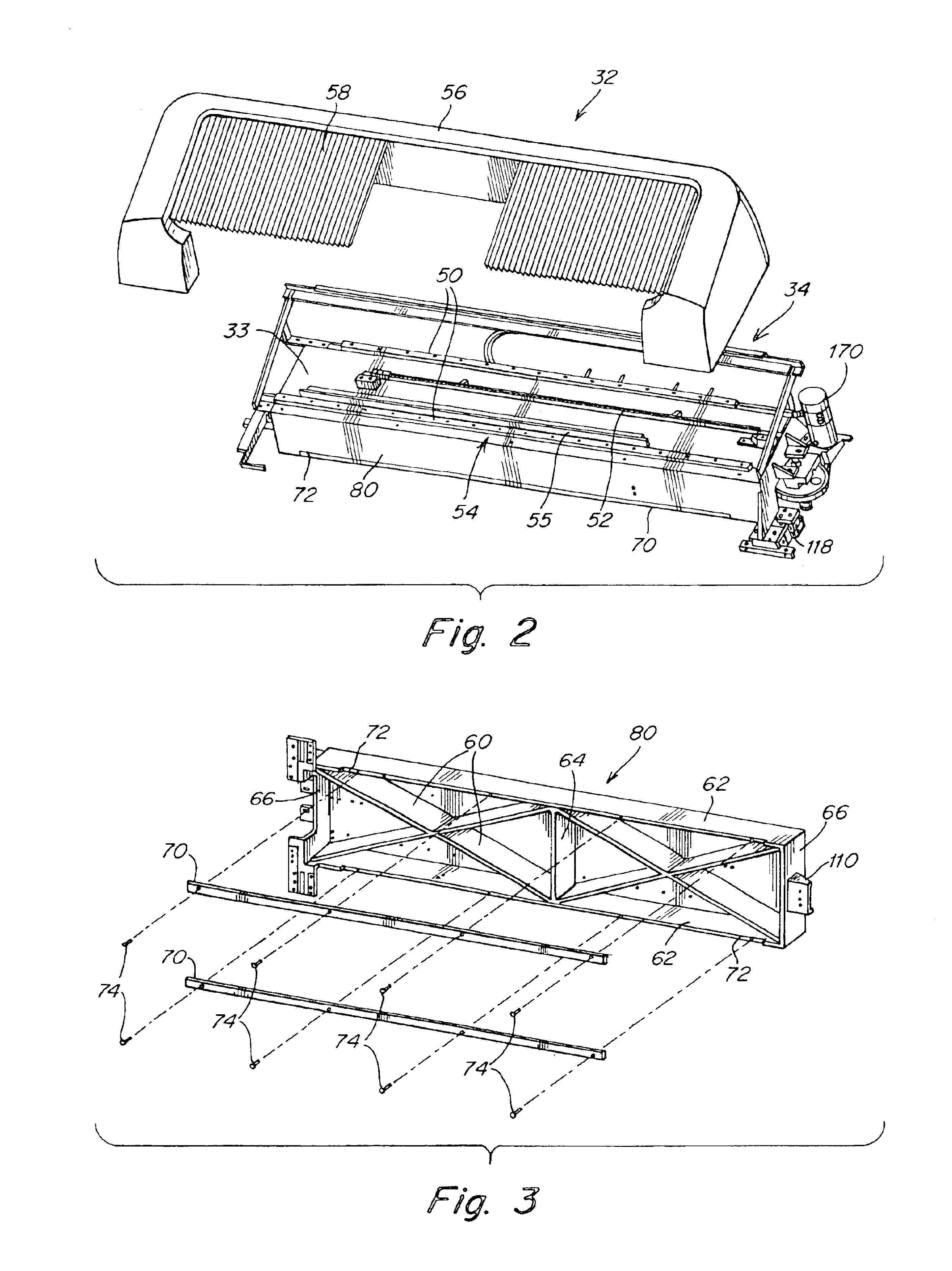Temperature compensation system for a coordinate measuring machine
a technology of temperature compensation and coordinate measuring machine, which is applied in the direction of mechanical measuring arrangement, instruments, manufacturing tools, etc., can solve the problems of reducing errors, limited accuracy of coordinate measuring machine, and increasing the cost of reducing errors
- Summary
- Abstract
- Description
- Claims
- Application Information
AI Technical Summary
Benefits of technology
Problems solved by technology
Method used
Image
Examples
Embodiment Construction
This invention relates to machines having an element, such as a carriage, that moves along guideways, such as rails. This invention is directed to minimizing thermal errors in such machines by applying design techniques that make the machine or components of the machine more or less insensitive to changes in the thermal environment. This invention does not deal with geometric errors at reference temperature. Thus, the machines must still be calibrated at the reference temperature. However, this invention eliminates or minimizes the need for complex thermal error compensation.
The various aspects of this invention offset or accommodate differential expansion and contraction of one portion of the machine with respect to another portion with changes in temperature. In one aspect, the guideways or rails on which the element rides rest on a beam or support which has a coefficient of thermal expansion different from that of the rails. Members, such as bars, are employed to balance the ther...
PUM
 Login to View More
Login to View More Abstract
Description
Claims
Application Information
 Login to View More
Login to View More - R&D
- Intellectual Property
- Life Sciences
- Materials
- Tech Scout
- Unparalleled Data Quality
- Higher Quality Content
- 60% Fewer Hallucinations
Browse by: Latest US Patents, China's latest patents, Technical Efficacy Thesaurus, Application Domain, Technology Topic, Popular Technical Reports.
© 2025 PatSnap. All rights reserved.Legal|Privacy policy|Modern Slavery Act Transparency Statement|Sitemap|About US| Contact US: help@patsnap.com



